McDonald’s Chicken McNuggets Score a Natural Makeover


Assumptions about the decline of McDonald’s may have been exaggerated as the fast food giant’s financial performance has recently improved, thanks largely to its new all-day breakfast menu. And when it comes to that Egg McMuffin, the company will remind you that those eggs are often cracked fresh, and the company is on a long-term quest to ensure that they are cage free.
But McDonald’s is still struggling with that millennial crowd, as products created with them in mind failed to sell and therefore have fallen off the menu. Other food creations were released with hype, only for consumers and nutritionists to find out that some items, such as a kale salad, had more calories than the venerable Big Mac.
That quest to attract consumers who want sustainable and responsible food, while not alienating its base — which enjoys far more options at which to nosh these days — has become a huge chicken-and-the-egg question bedeviling McDonald’s. But when it comes to the chicken side of the equation, the company says it is reformulating its infamous Chicken McNuggets in order to satisfy customers who want to know where their food comes from. Considering that the current recipe for McNuggets has over 30 ingredients, the fact McDonald’s has taken so long to change the recipe makes one wonder if the company's product-development team is a few French fries short of a Happy Meal.
According to Crain’s, these new McNuggets could be launched nationwide before the Rio de Janeiro Summer Olympics. The Olympics are a longstanding advertising staple for McDonald’s, so it seems logical to wait for a huge global platform to launch this new product. On the other hand, between the ongoing impeachment drama unfolding in Brazil, social strife due to the country’s recession and that much of Rio is still a mess, there is a huge risk that sponsors of this summer’s mega-event may get buyer’s remorse.
And as the case with Rio, information on these new McNuggets is still incomplete. The company has not released the exact ingredients in the new recipe, which is currently undergoing test marketing in some locations across the U.S. But a McDonald’s spokesperson confirmed that they will include ingredients with which consumers are familiar, including “lemon juice solids” and “rice starch.”
For McDonald’s purists, it is still likely that these morsels will include chicken skin and “marinade,” and rest assured, they will still be formed in those four distinct shapes. But for the more food-savvy crowd, McDonald’s approach to how it makes its food during these times is a head shaker. Oddly enough, the company describes that outer coating as “tempura batter,” the appearance and crunch of which alone prove that McNuggets are a planet away from a bento box. Furthermore, considering how many of these nuggets are sold every day, Jamie Oliver’s rather gross interpretation of how chicken nuggets are made is fairly accurate.
Whether these new chicken nuggets will help McDonald’s score more customers, or at least secure the ones they still have, remains to be seen. On other fronts, the company is still moving, albeit slowly, toward more sustainable beef sourcing; it says it is focused on freeing its supply chain of deforestation; and has even tested organic food in some of its markets. McDonald’s is also changing many of its restaurants so that food is made to order, and more of restaurant interiors are being remodeled. Whether these moves, along with the all-day breakfast menu, can continue to sustain the company are big questions as the company still has not convinced millennials -- the biggest marketing demographic in the U.S. -- to come even close to having McDonald’s on their radar.
Image credit: McDonald’s
Mobility in a Net-Zero World
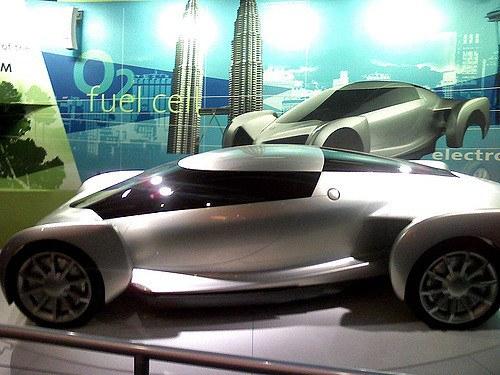

Editor's note: This is the second post in a two-part story on Shell's Eco-marathon Americas event and Powering Progress Together roundtable. You can read part one here.
A number of prominent thought leaders in the areas of energy and transportation gathered in Detroit to discuss the future of mobility at an event hosted by Shell.
The afternoon session opened with Valerie Brader, executive director of the Michigan Agency for Energy. She shared her concerns from a government perspective.
Many of the policies in place today were written with the idea that renewables would cost more, Brader explained. That’s no longer the case. Conversations are key.
This is a point that kept coming up throughout the day. Here you have these huge entities -- state governments, oil companies, auto companies -- all with large budgets, but none nearly large enough to prepare for all possible scenarios. In a sense, all of them are at the mercy of a future that is emerging quickly enough to need to plan for, but not quite quickly enough to be able to see yet. At the same time, none of these actors are in a position to control it.
Mobility in a net-zero world
A panel discussion on mobility in a net-zero-emissions world was moderated by Jules Kortenhorst, CEO of Rocky Mountain Institute. It featured Wolfgang Warnecke, Shell’s chief scientist for mobility; Kristin Schondorf, global auto and transportation leader for professional services firm EY; and Shelley Poticha, who heads up urban solutions for the Natural Resources Defense Council (NRDC).
Asks Kortenhorst: "Look around, what’s new?" Experts cited a large uptake in biking in NYC, public-private shared vehicle partnerships, and the conversion of all taxis at Amsterdam’s Schiphol airport to Teslas. China plans to have 5 million electric vehicles by 2020, and Holland will sell only EVs by 2025. India plans to make its entire government fleet electric by 2030, they continued.
But, says Warnecke of Shell, let’s not overlook the continued potential of the internal-combustion engine. Is he just being loyal to his company? Liquid fuels have many advantages, which is why they hung around for so long. What if we can find a way to make them carbon neutral? It's certainly not out of the question.
Uncomfortable with the uncertainty, some government entities are betting it all on one horse: the EV. Will that tip the global scale? What if they are wrong? (Remember Betamax?)
Autonomous vehicles, smart cities and the future of mobility
The younger generation is less interested in owning cars, especially when they have many other options. NRDC is partnering with the University of California, Berkeley, on a study of the national implications of car sharing. Seventy-seven small and mid-sized cities will compete in the Department of Transportation's Smart City challenge. How do we make this transition without losing the character and vitality of cities?
What will be the impact of autonomous vehicles? Once the technology becomes established, will people buy them, or simply use them as a service? In the U.S., cars are typically held for more than 11 years. Will autonomous vehicles change that?
Lots of questions: How do you ensure safety? Maintenance? AI is considered a driver. Will we travel more and if so, does that defeat the purpose?
The role of policy cannot be ignored. Look at biofuels today; that was another government bet. Was it a good one? Is it too soon to say?
NRDC looked at the market dynamics around dropping from two vehicles per household to one. Cost savings were estimated at $8,000 per year. Can these services enhance public transportation? Ride share can take you to the transit hub where you get on something that acts like a bus. Cars as assets are utilized only 5 percent of the time. Original equipment manufacturers are thinking a lot about this. New jobs. New opportunities. Who is going to win? We talk a lot about cars, how is freight going to be moved?
Martin Haigh, Shell’s senior energy advisor, spoke about energizing the transition. The Sustainable Development Goals are simultaneously asking for more energy for the millions who don’t have access and aggressively combating climate change.
The Shell team developed two scenarios: Mountains and Oceans. Both achieve net-zero emissions by the end of the century, but by very different paths. The Mountains scenario imagines a world in which energy policy is shaped predominantly by government, where the Oceans scenario envisions a landscape shaped predominantly by market forces and civil society. An enormous amount of effort will be required to “bend the curve,” as Mark Barteau pointed earlier in the event. Transformations in cities will be essential.
According to Shell's predictions, while renewables will dominate, fossil fuel energy with some form of carbon capture and storage (CCS) will still account for 25 percent of the energy mix. In addition to CCS, for its part, Shell will focus on biofuels and hydrogen. Still, developing scenarios and predicting the future is difficult, since some new technology may yet come along, “from the edge,” and change the picture completely.
21st-century urban development: A case study in Detroit
There followed a discussion about Detroit and the progress being made in rebuilding that city. It featured Detroit Mayor Mike Duggan, Shell Chairman Charles Holliday and Penske Corp. Chairman Roger Penske.
Some signs of progress include the Super Bowl's return to the Motor City, as well as the return of Indy racing on Belle Isle. But perhaps the bigger news is the fact that millennials are moving in.
Drawn by the low housing prices and the opportunity to play a significant role in designing the community, the signs of Detroit's younger residents are widespread, whether it’s the appearance of organic food markets or vinyl record stores. There is innovation around derelict housing, and community gardens are popping up on vacant lots.
At the same time, the area is home to 375 mobility R&D centers, and companies like Quicken have moved in. That means opportunities are there to attract even more urban pioneers.
In his closing remarks, Shell's chairman said: “We started out this morning saying, 'There is no easy fix.' But coming out of a day like today, you know we can solve these problems. We can improve our economy, improve the lives of people, and deal with these longer-term environmental problems at the same time.”
Click here for more TriplePundit coverage of Shell's 'Powering Progress Together' event.
Image credit: Eric Kilby:Flickr Creative Commons
Weight-Loss Secrets From 'I Love Lucy'
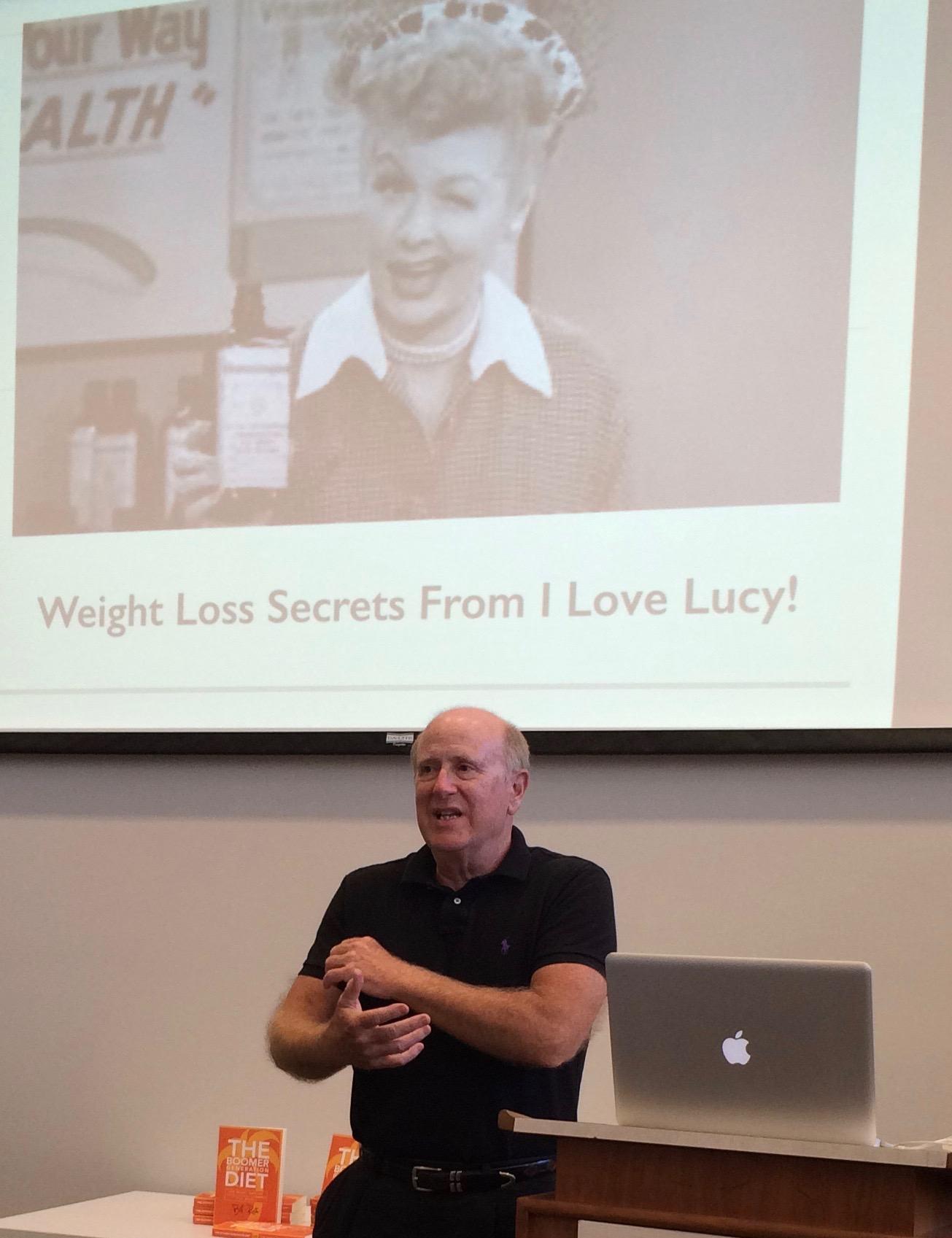

What in the world could Lucy, Ethel, Fred and Ricky tells us about how to achieve sustained weight loss (or about sustainability, for that matter)? It turns out that this dynamic foursome had a secret sauce. It was team power.
Big Food wants you to believe that eating/drinking smaller portions will result in weight loss. The first of this two-article series outlined the four ways eating Big Food's "smaller portions" still adds weight. It lists three best practices for avoiding Big Food and weight gain.
This article focuses on the research around how people working together can achieve sustained weight loss. Shape Up Rhode Island conducted one such research study to determine the impacts social activity and team support have on individual weight loss success. This research found that people attempting to lose weight in a social or team environment achieved about 10 percent more weight loss. The bottom line is that weight loss success is a team sport!
What "I Love Lucy" has to do with weight loss
"I Love Lucy" was brilliantly designed to capture our core human attributes. Lucy is the emotional/creative type that we all love being around in short bursts of fun. Ethel is a social enabler who knows better but can’t help herself from participating in Lucy’s crazy ideas because she loves her so. Fred is the analytical bystander who thinks he has it figured out and thinks it is important to explain why he was right. Ricky is a driver focused on achieving success, including building a fun-loving family with Lucy. These four characters are psychological summaries of human behavior:
- Emotional
- Social
- Analytical
- Driver
Appreciating these human attributes is important because weight loss is such a very personal challenge. A secret to weight-loss success -- or success in any healthy or sustainable lifestyle change -- is to create your own "I Love Lucy" team. Four keys to building a successful team are:
- Be socially creative, add fun to the process
- Be a team that can support individuals during the highs and lows of weight loss or adopting a new lifestyle
- Analytical feedback is important when it is balanced so that the result is an insight and not stress
- Find that team drive that will maintain motivation and ambition
The "I Love Lucy" secret to success
The "I Love Lucy" weight-loss secret is in how to build a successful team. It begins with having an understanding of your own strengths and weaknesses. Are you a Lucy or a Fred? How about an Ethel or a Ricky? Once you sense who you are, then you know what type of strengths you should look for in terms of your team members.
For example, if you are a creative emotional "Lucy," then it would be great fun, but probably disastrous in terms of weight loss, to add another Lucy. Having an Ethel and a Ricky would be more helpful. Having a Fred might give you analytical insights, but he or she would also probably stress you out. And remember, stress adds weight.
The companion question is: Where to find your teammates? With social media, there are so many options. Search the online meet-ups for weight-loss groups. Attend these to find potential friends where you can compliment their efforts while they compliment yours.
Network through your church or social organizations. Our country is in a national weight crisis. You (we) are not alone in this. I am continuously surprised at how engaged people become when I bring up a weight-loss topic. A lot of people just like you and me are concerned, are searching for insights, and would enjoy positive collaboration. Get out there and start making connections with an eye out for potential teammates.
Finally, there are professional organizations like Weight Watchers. My research suggests that many of these companies' approaches on food selection and weight measurement are not best practices for sustained weight loss. But their use of teams and a professional coach do align with my research on proven best practices for sustained weight loss.
HR's role in sustained weight loss
Many (most) human resources (HR) departments have a focus on enhancing work associate health. Selling companies weight-loss and wellness programs is a growth industry. Here are three keys in accessing programs based on their ability to achieve sustained results:
- You can't buy sustained success. You can buy results. You cannot buy sustained results unless you plan to keep paying, and paying and paying. The goal is not weight loss. The real goal is lifestyle change.
- You can't trick people to succeed. Game theory is great. People will respond to contests, games and fun. But what happens when the contest is over is the key issue. Most of the time the contest ends and weight is added.
- Teams sustain individual success. The Hawthorne Study was done to access the optimum amount of light for enhancing work associate productivity. The study found that it was not light levels, but people observing people, that improved productivity. That is the power of a team. It is people looking for, enabling and supporting each other. That can be sustaining. It will produce sustained weight loss.
Start your team to achieve sustained weight loss
Research points to weight-loss success being a team sport. Individual weight loss is really hard. Create or join a team that can enable success. Seek professional support. Explore using the weight-loss secrets from "I Love Lucy." I did and I lost 30 pounds while still enjoying chocolate chip cookies and living more+!
Image credit: Bill Roth
People, Profits and Pounds in the American Candy Market


By Jerry Nelson
A piece of candy is a sweet treat, although it adds pounds to the scale, and chocolate, sugar candies and other confections are consumed all around the world.
America is the world's second largest consumer of candy -- spending, on average, over $7 billion each year on sugary treats. That won't help waistlines -- it takes just five fun-sized candy bars for someone to gain a pound in a week -- but it creates many jobs that support a household. In fact, the candy industry employs over 33,000 Americans. (The world's largest consumer? Denmark. The average Dane eats over 35 pounds of candy annually.)
From a health and sustainability perspective, the problem isn't with having a sweet treat now and then. It's with the artificial ingredients found in most mass-produced candy and the quantity that people are eating.
Easter is America's biggest candy season. Obviously, Halloween is a cash machine for confectionery corporations -- the National Confectioner's Association estimates Halloween sales will top $2 billion in 2016 -- and Christmas isn't far behind. Most of that candy is filled with synthetic flavors, fake coloring and hydrogenated oils. That's the bad news.
The good news is that great-tasting substitutes are available. Author Andrea Donsky has some thoughts on the subject, which she shared in her 2011 book, "Unjunk Your Food: Healthy Alternatives."
Creating products made with safer components is just a portion of what being sustainable means. The book has a listing of businesses that create satisfying junk food that leave out the fake ingredients and fats. The work is, basically, about "unjunking" unhealthy food. Everyone likes junk food, but consuming healthier options does not have to suggest never having sweet snacks. The answer is to select food that is minimally concocted or made without unneeded chemicals. The goal? Eliminate artificial components as completely as possible.
Donsky cites three companies as leaders in producing better candy:
Newman's Organics: Founded by the deceased actor Paul Newman, Newman's Own makes a variety of snacks including pretzels, licorice, and popcorn. Started in 1992 as a subsidiary of Newman's Own, Newman's Organics was spun off in 2001. The chocolate is certified natural and Rainforest Alliance.
Marketed by a lengthy list of supermarket chains, the site includes a search engine which enables patrons to find a store near them.
Surf Sweets: Kids love gummy worms and bears. Grown-up kids love them as well. Made by both Surf Sweets and Yummy Earth, the goods can be purchased at Whole Foods as well as online. Each of the company's products is free of fats, GMOs, gluten and artificial flavoring and coloring. Each of the elements in Surf Sweets' products is accredited as natural by the USDA.
Yummy Earth: The company which makes gummy bears with Surf Sweets also offers suckers. Founded by two fathers, each of the creations are created with genuine fruit extracts and organic ingredients.
Image credit: Pixabay
Jerry Nelson is an American freelance writer and photographer covering social justice issues globally. When not traveling, he lives in Buenos Aires with his wife Alejandra and their cat, Tommy. Follow him on Twitter.
General Mills Leverages Skills-Based Volunteerism Across the Globe
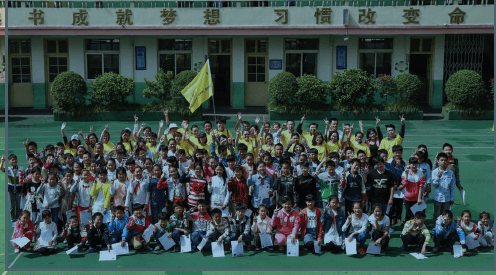

In our increasingly global world, our planet is becoming smaller than ever. The movement of goods, services and people has reached unimaginable levels, with greater global connectedness in our economies and even our lives. Today, 1 in 3 goods sold crosses international borders. This trend is likely to increase as digital technologies reach new depths, decreasing manufacturing and transportation costs.
While the last era of globalization emphasized finding low-cost production, the next wave will emphasize global knowledge. A shifting business landscape creates challenges for international companies to thrive. How can they connect to local communities, while having a global presence and outlook? Do brand values resonate with employees in emerging markets? How can a company mission be applied to specific and varied countries across the globe and throughout time?
General Mills' commitment to volunteerism is an inspiring example of a global company taking action locally to make a difference. This multinational consumer food company markets many well-known brands, including Cheerios, Yoplait, Pillsbury and Häagen-Dazs, among others, and has dozens of production facilities across the globe.
TriplePundit spoke with Mary Jane Melendez, executive director of the General Mills Foundation, to gain insights into how the company has engaged volunteers locally as a multinational.
General Mills celebrates 150 years of corporate philanthropy
General Mills is celebrating its 150th anniversary this year. Its philanthropic work began nearly 150 year ago, and General Mills has emphasized this contribution as part of the company culture.
"From our CEO on down, General Mills employees are committed to serving the communities where we live and work by sharing our business expertise, our leadership skills and other talents to help improve lives in our communities," Melendez explained.
"As a global food company, having our employees volunteer and engage in our communities is not something we do out of obligation. It is something that we want to do to make sure communities and the people in them thrive for the next 150 years to come. This legacy of service and volunteerism started with our company founders and continues to flourish today."
The company's Think Global, Volunteer Local (TGVL) initiative coincides with Earth Day and National Volunteer Week (which was from April 10 to April 16, in case you missed it) and encourages employees to get involved in meaningful ways. General Mills' Good Works program emphasizes using on-the-job skills as an asset in helping people in their local communities by connecting marketing and consumer insights professionals with pro bono projects through nonprofit organizations.
"As our company continues to grow and expand internationally, one challenge we’ve overcome is identifying relevant and engaging volunteerism outside of the U.S.," Melendez told us. "2016 marks the seventh year of our TGVL initiative, which is a month-long celebration that engages more than 3,000 employees worldwide on six continents. TGVL is helping to build momentum and awareness around the importance of community engagement to the company."
From traditional to skills-based volunteering
General Mills is moving away from traditional volunteerism by encouraging employees to use their unique skills and experience to make a difference. Knowledge philanthropy, or skills-based volunteerism, helps General Mills make a unique contribution that might not have been possible otherwise, with highly-trained employees in nutrition, food science, research, marketing, finance and operations. It also allows employees to give back in a more meaningful way, by utilizing workplace skills to help nonprofits.
"Currently, we are working in markets like China, India and France to bring forward community and skills-based volunteering opportunities for our employees that are tied to our global focus areas of increasing food security and advancing sustainable agriculture," Melendez told us.
"Another example of our work is our partnership with the nonprofit organization Partners in Food Solutions, where we leverage technology to connect and share our employees’ expertise in food science, engineering, marketing, and communications with farmers, food producers and growers across the world -- allowing [employees], no matter their location, to serve in meaningful volunteerism projects year-round.”
From company culture to local engagement
What is particularly inspiring is the number of employees that General Mills engages in volunteerism. Nationally, 83 percent of General Mills' employees engage in volunteer work (51 percent internationally). Considering some countries do not have a culture of volunteerism, these are impressive international numbers.
General Mills has done this partially by helping employees to understand the overall strategy of the company, translating this information into local engagement. Food security, nutrition, education and fitness are issues that are important to the company and central to corporate philanthropy work.
Many General Mills retirees are also experts in certain area, serving both as an asset to the community and as a connection to current employees. Volunteerism is a great way to allow them to still be part of a caring community, while leveraging decades of experience and expertise.
As General Mills becomes an increasingly global company with a strong presence in many emerging economies, its core values have remained relevant and inspiring to employees across the globe. The company has used volunteer work as a way to create brand value and purpose for both current and retired employees, finding opportunities to make a difference that resonate with employees across the globe. Will your company do the same?
Images courtesy of General Mills
The Global Effort to Make Beef More Sustainable


As society tries to find new solutions to feed a growing population that could soar to 9 billion by 2050, meat consumption is one of the largest obstacles to a more resilient global food supply.
The growing worldwide middle class, and its demand for more protein, is seen as one of society's biggest long-term environmental challenges. Plenty of reports, including this recent one by the World Resources Institute, posit that a reduction in meat consumption — especially beef -- and eating less dairy is crucial in order to guarantee that the world develops a more sustainable diet.
One country, Denmark, has even suggested a tax on red meat. Such an idea would trigger guffaws in countries such as Argentina and Uruguay, the economies of which were built on the global demand for beef.
The global beef industry has taken notice of the shifting market, and companies across its value chain have formed a coalition, the Global Roundtable for Sustainable Beef (GRSB). This organization, which includes growers, producers, restaurants and retailers, promises an agenda of “continuous improvement in sustainability” that it says will ensure the industry will become more environmentally responsible, socially conscious and economically viable.
To learn more about the Global Roundtable on Sustainable Beef and its aims, 3p spoke with the organization's executive director, Ruaraidh Petre, by telephone while he was traveling in Europe.
Petre spent almost his entire adulthood working within farming and the meat industry in one role or another. He first started as a farmhand in northwestern Australia before he moved to Scotland, where he became a farm manager on an estate that raised both sheep and cattle.
His work with various NGOs within the global livestock industry took him to places including Afghanistan, Tibet, India, Tanzania and what is now South Sudan. He eventually became a regional director in southern Africa for the nonprofit Solidaridad, an organization that works to develop socially and environmentally responsible supply chains in developing countries. And over the past four years, he has become GRSB’s executive director, working from his home base in the Netherlands.
Having spent much time on the ground within the livestock industry, his experience leaves him convinced that, despite the beef industry’s large global impact, the sector is best served by having advocacy organizations work at a national or regional level, Petre explained.
The GRSB serves as an advisory body, offering assistance on anything, including developing standards or writing bylaws, to kindred organizations in countries such as Brazil, Canada and the U.S. “Issues in one country are different from another country,” Petre told 3p. “Our job at GRSB is to make sure there are benchmarks and a global view of sustainability issues in general, and to ensure that there is progress.”
Ruaraidh Petre: Each country has its own challenges when it comes to beef
In Brazil and emerging beef markets such as Paraguay, deforestation is the biggest challenge. In the U.S., the amount of grain required to feed cattle riles many critics of this country’s beef industry.
And from the GRSB’s perspective, these environmental and social challenges, while very real, are not necessarily black-and-white. Take Brazil, where GRSB has worked with Aliança da Terra, a civil organization that represents thousands of beef producers in Latin America’s largest economy. Indeed, vast swathes of Brazilian land have been lost to cattle ranching. “But it’s important to remember that this land was cleared for cattle, not crops,” Petre insisted, “because for many of these people, that was the cheapest thing to do in order to make a living.”
After many forests in Brazil were felled to raise cattle, that land eventually became treated with phosphates, lime and other soil enrichments in order to grow crops such as soy and cotton. “We recognize the scale of the problem, but it is important to remember that from the locals’ perspective, this was all part of economic development,” Petre said. “Of course we do not want to cut down trees, but if you do not offer an alternative for these people, you’re not going to stop it.”
Aliança da Terra’s partnership with GRSB has resulted in several benefits, Petre told us, some of which include better land-management systems, improved fencing, more resilient grasses and better quality cattle. From Petre’s point of view, while that forest may not reappear, that land at least can be put into better use as pasture land, instead of growing crops that do little but exhaust the soil — and hence continues to feed the deforestation frenzy.
When grazing is the best option: Local economies and healthy soil
It is that related issue, land use, that Petre and the GRSB insist is deserving of a more nuanced discussion.
Ten years ago, the United Nations’ Food and Agriculture Organization (FAO) issued a report outlining what it said was the global livestock industry’s disturbing environmental impact. Depending on the source cited, anywhere from 25 percent to 40 percent of the earth’s surface is devoted to the livestock industry (the FAO estimate is 30 percent).
But Petre’s response is that we need to do more than simply look at land-use statistics. “We’re talking about a long-term carbon management cycle,” Petre explained. “Managed properly, the raising of cattle ensures that carbon stays in the soil.
“You can’t do that with many crops, which require highly intensive fertilizers in the soil. If you at least rotate between grazing and cropping or go for a complete grazing system, you can slow down that erosion. And if you manage it really well, you can increase the rate at which that soil can sequester carbon,” he continued.
Rather than focus on the amount of land, laser in on how that land is managed, Petre averred during our conversation.
Take Scotland, where Petre worked for several years. Much of the country receives at least 200 days of rain annually. “You can try growing crops, but you won’t have high yields,” he said, “so you are much better off raising cows and sheep in Scotland than many crops.” The solution is to ensure that cows are not over-grazing and that ranchers and herders are careful stewards of the land, so that the soil can hold that precipitation for the long term and therefore prevent the devastating effects of erosion.
Then there is the opposite problem in the dry climates of southern Africa, as in Namibia and Botswana. “Down there, the crops are irrigated, and you are going to run out of water,” Petre explained. “You may as well produce something that can survive on grass, which is why in addition to this region, the steppes in Asia, savannas in Africa, the pampas in Argentina — these areas are not good for raising crops, but cattle can be part of grass-based ecosystems with less of an impact on local water supplies.”
But what about grain-fed beef?
At that point I interjected: But most beef in Canada and the U.S. is grain-fed, and we are devoting land to produce grain to feed livestock. So, how can the beef industry and all of these sustainable roundtables reconcile the environmental differences between grass-fed and grain-fed beef?
“That’s an interesting point,” he replied, “but the world is never as simple as we’d like it to be. Even grain-fed cattle have a diet of 80 to 85 percent roughage, in other words, grasses. And as cattle on such a diet, remember they are eating the whole plant, not just the grains or kernels.”
Indeed, part of the issue with grain-fed cattle in North America is that the production of grain is subsidized by the Canadian and U.S. federal governments. But at the same time, grain-fed beef is the reality on this side of the pond because of consumer preference.
Feeding cattle grain during the last three to four months of their life cycle allows for that marbling and fat that both chefs and consumers covet. Grain allows that fattening process to occur faster, more efficiently and with less energy — with the caveat, of course, that while purely grass-fed cattle consume only grass and therefore, sun, their grain-fed cousins require more inputs.
“But you can finish raising the cattle faster, and actually produce lower greenhouse gas emissions if you finish on grain,” Petre told us. If you’re looking at energy consumption in its entirety, not just by sources such as conventional fuels versus the sun, the energy density required by grain-fed cows is lower, he insisted.
The bottom line
The argument over the benefits as opposed to the pitfalls of the global beef industry will not end anytime soon. But nevertheless, Petre and the GRSB are in this for the long haul.
This organization, Petre emphasized, is committed to collecting data from various beef-producing countries over the next few years so that they can have this baseline information and share it with their stakeholders. National sustainability organizations in large beef producers, including Australia, the U.S. and Canada, are working on lifecycle analyses so everyone can see where more improvement can be made. And as far as labor and human rights fare, Petre said the GRSB and all national boards need to be committed to the Ruggie Principles espoused by the United Nations.
On the ground, Petre described new best practices that he sees as empowering. The GRSB’s outreach, along with programs run by its partners, have resulted in more land managers becoming increasingly careful stewards of their land as they ensure that the grasses and grains consumed by their cattle are more optimized than ever before. He’s seen more meat-packers become more conscious about recycling water while reducing the amount of packaging they use.
And while emerging beef producers, such as Paraguay and Colombia, present their own set of environmental challenges, Petre told us he looks forward to developing relationships within these markets in order to ensure that the beef industry continues to provide stable employment and cautious land management.
Much will be required of the roundtable in order to change the hearts and minds of many who have already decided that a conversation including both sustainability and the beef industry is, quite simply, a non-starter.
But these discussions are well worth having, and the GRSB is on a strong start by having this 28-year veteran of the livestock industry, who has spent far more time in the pasture than in the corner office, at the helm of this organization. They'll need it if this sector is going to stay relevant during the 21st century.
Image credits: Leon Kaye
The Business Sector Needs to Act on the Global Water Shortage


With so much focus on air quality, carbon footprint reduction and sustainable operations, businesses can easily lose sight of other issues that may be forthcoming. This includes the real potential of an impending global water shortage.
Nearly 66 percent of the world's population lacks proper access to fresh water for at least one month out of every year. The problem is much worse for others. Further studies, including those published by the United Nations, state that approximately 700 million people now suffer from water scarcity in 43 different countries.
A massive chunk of the world’s water use is tied to the business sector: 69 percent of water used globally goes toward agriculture, while another 19 percent is used for industry. Clearly, businesses can’t afford not to pay attention to their own water usage.
The issue is serious enough that the United Nations recently established a set of Sustainable Development Goals, or SDGs, to be introduced by the year 2030. Business owners and industry leaders who research, understand and implement these SDGs and other strategies of water conservation will put themselves in a position to quickly respond to and possibly even counteract any future water crises.
Sustainable Development Goals at a glance
A total of 17 specific objectives, listed in order of greatest to least impact, can be found on the United Nations' Sustainable Development Goals website. Milestones include everything from putting an end to poverty, the U.N.'s topmost goal, to the 17th goal of revitalizing global collaboration and partnership. The sixth objective of the SDG agenda covers the availability and sustainability of clean water across the globe.
While the SDGs were first unveiled at a U.N. summit in September 2015, the plans weren't enacted until January of this year. The U.N. hopes to achieve all 17 of its targets by the year 2030.
Internal water targets are a start
Businesses often fall into the trap of underestimating their water usage. The liquid they use in their facilities is clearly visible, but vast amounts of water also go into growing any foods or wood- and cotton-based merchandise they provide — right down to the shirts on their employees’ backs.
Internal water targets are a step in the right direction, but they can set too low a bar. Coca-Cola’s goal, for example, is the vague aim to “replenish” the water they use. Look to Nestlé for a better example of a clear, ambitious goal: The company has pledged to cut water use on every European site by an impressive 40 percent in the years leading up to 2020.
Improvement one business at a time
Still, businesses should embark on larger missions. One by one, some of the largest corporations are blazing a trail. General Mills is doing its part to highlight California’s water conditions by mapping the watersheds from both the San Joaquin and the Los Angeles rivers.
Meanwhile, the team at financial services giant BDO has a firm-wide sustainability program called BDO Green. “BDO is constantly looking for new ways to reduce our environmental footprint, educate our employees, and give back to the communities in which we operate. At BDO, we know we can do good as a firm only if we do good in the world around us,” says a BDO executive.
Pioneers like these companies can pave the way for others in the business sector that are interested in pursuing energy conservation, carbon footprint reduction, paperless record-keeping and other greening strategies on their own behalf.
The future is now
Regardless of any plans your company may have for water conservation, carbon footprint reduction or energy consumption in the future, the time to act is now. If necessary, don't be afraid to reach out to suppliers and contacts who specialize in environmentally-friendly or sustainable operations. Given the recent boom in the profession, finding solutions that work within your budget and timeline isn't the arduous task it once was.
Image via: barnimages/ waterfall
Billionaire Climate Activist Tom Steyer Pays $25M for Millennial Voter Drive

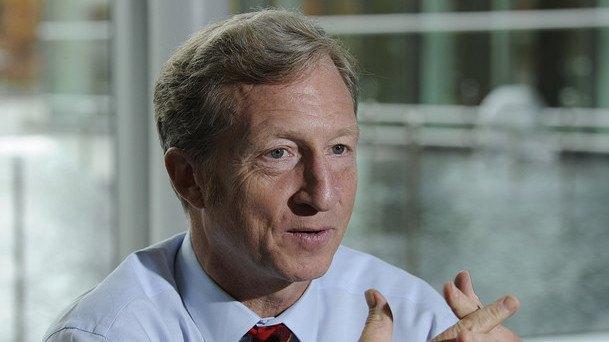
Rumors circulated that former hedge fund manager Tom Steyer planned to run for California Senate seats in the past, and even for governor in 2018. But he may have found that he can make the biggest impact behind the scenes.
Since leaving Farallon Capital Management, the fund he founded in 1986, Steyer has spent much of his time as an activist raising awareness of climate change risks. But this year, he is leveraging the Super PAC he founded, NextGen Climate, in order to mobilize young voters for the November 2016 election.
If Steyer’s investment in young voters pays off, not only could Democrats have something to celebrate in November, but there would also be a more favorable political environment for advocacy groups and businesses that are committed to do their part to scale investments in clean-energy technologies and continue the Obama administration's work on climate change.
Earlier this week, NextGen Climate announced that it would fund a $25 million voter-registration drive to target millennials in seven battleground states. In a written statement, the Super PAC said the focus of this voter-registration drive is to get young voters out so they can have their say on climate justice. But looking at the seven states where these funds are targeted, it is clear that Steyer and NextGen Climate are striving to tip the balance in what could be yet another tight presidential race between presumed nominees Hillary Clinton and Donald Trump, while helping to flip the Senate to the Democrats:
Colorado: The Centennial State went to Barack Obama in the last two elections, George W. Bush the previous two, and is considered one of the most purple states. But despite Steyer pouring money into the state’s 2014 Senate race, Republican Cory Gardner edged out Democratic incumbent Mark Udall. As for this year’s Senate race, the University of Virginia’s Larry Sabato has said it "leans Democrat” for incumbent Michael Bennett, but as 2016 has proven to be a crazy election year, anything can happen.
Illinois: Illinois is a longstanding Democratic stronghold, but political scandals in part helped Republican Sen. Mark Kirk take Obama’s former Senate seat in 2010. If the Democrats are going to take back the Senate, this is one seat that has to flip, and so far most pollsters view this race leaning Democrat as well.
Iowa: Republican incumbent Charles Grassley will coast to a seventh term in the Senate, but Iowa is always a close one in presidential races. Hog-castrating Joni Ernst narrowly won election to the Senate in 2014, but that was largely because her opponent, Bruce Braley, had a foot in his mouth more than on the ground. Steyer’s investment in that race failed to help Braley win, so at least this year, he wants to ensure Iowa does not go red in November.
Nevada: Retiring Senate Minority Leader Harry Reid has never been popular in his home state, and so far the race to succeed him has been a toss-up. Since the 1992 presidential race, Nevada has been a swing state, voting for the winner. But this year, the state’s relatively high unemployment rate, and the lingering effects of the foreclosure crisis, could make Nevada fertile ground for Trump.
New Hampshire: Long a Republican bastion, the state has turned purple since it helped launch Bill Clinton into the White House in 1992. The state is leaning toward Hillary this year, but in the Senate race, Republican incumbent Kelly Ayotte is battling popular Democratic Gov. Maggie Hassan in what looks to be a toss-up.
Ohio: Watch for this state to score the most visits by the presidential candidates this cycle. Even if Trump wraps up the nomination after California’s June 7 primary, the Republican National Convention in Cleveland this summer could still give television viewers a gift that keeps on giving. The state’s Senate campaign could also become one of the most expensive in the country, with former Gov. Ted Strickland, who lost re-election to John Kasich in 2010, taking on incumbent Republican Rob Portman in what so far looks like a toss-up as well.
Pennsylvania: The Keystone State is always described as a battleground, but it has not voted for a Republican presidential candidate since the first Bush in 1988. Often described as 'Pittsburgh to the west, Philadelphia to the east, with Tennessee in between,' much of the state’s electorate is culturally and politically conservative. But while 2014 was a washout for Democrats, Tom Wolf was the only gubernatorial candidate to defeat a Republican incumbent, though to quote VEEP character Selina Meyer, a “bowl of hair” could have defeated the unpopular Tom Corbett in any state. But now Tea Party favorite Sen. Pat Toomey is on the ropes, and Katie McGinty, Wolf’s chief of staff, has a good shot at winning this race.
If the Democrats are going to take back the Senate, they would need at least four seats (if Hillary Clinton wins the presidential race, as the vice president would break a 50-50 tie), but six would put the chamber safely in the Democrats’ hands.
Millennials, if they vote, could make that happen: Estimates suggest the total number of potential millennial voters has almost tripled since 2008, to now over 50 million. Of course, the key word is IF. Younger Americans frequently move, confront voter-registration laws that are not always seamless and have a history of failing to go to the polls, so their numbers don't necessarily mean they can have an impact on this election.
Nevertheless, if millennials come out in record numbers, watch for a political shift in Washington, D.C. this fall — one that favors policies based on a low-carbon economy that will reject many of the ideas that will come out of the Tea Party-led House of Representatives. And watch for Steyer to be a leading contender to succeed Gov. Jerry Brown in California in 2018.
Image credit: Brown Political Review
Unilever's Toxic, 15-Year Legacy in India

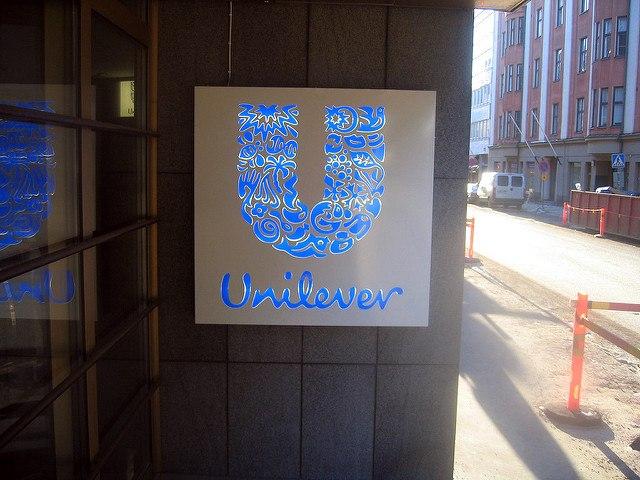
Few companies talk the talk – about corporate stewardship and sustainability, that is – like Unilever, which likes to paint itself as the model corporate citizen. But when the media spotlight is off, the company reverts to using its power to skirt responsibility for its actions.
That's how it avoided cleaning up the toxic remnants of its former thermometer factory in Kodaikanal, South India, for 15 years. Now, a global campaign aims to shine the spotlight on the problem and force the company to clean up its mess.
Kodaikanal was the home of a factory owned by Hindustan Unilever, the Indian subsidiary of the consumer products giant, from 1983 until the facility was shut down in 2001. During these years, workers were regularly exposed to toxic mercury -- which, it turned out, was also not disposed of properly. That is why the site remains dangerous to this day. Workers, locals and the environment have all suffered with the toxic legacy of this factory for 15 years.
“Unilever is insisting on leaving up to 25 milligrams/kilogram of mercury in soil – 250 times higher than naturally occurring background levels — even after clean-up. According to activists, that is far laxer than global standards and will harm the environment,” said Nityanand Jayaraman, a Chennai-based writer and activist who has been part of the campaign since 2001, in a press statement.
That is why last week, activists around the world convened in the United Kingdom, the home of Unilever's global headquarters, to demand that the company clean up the factory site to the highest international standards. The campaign is incredibly active on social media, where Unilever is currently being flooded with messages using the hashtag #UnileverPollutes
We want @Unilever & @PaulPolman to commit to high standard cleanup of #KodaiMercury pollution: https://t.co/nTLxCkD6dQ #UnileverPollutes
— CORE Coalition (@corecoalition) April 20, 2016
#UnileverPollutes: @Unilever & @PaulPolman shld use science not commerce, commit to cleanup #KodaiMercury now. https://t.co/yjkymeoOnP— CIEL (@ciel_tweets) April 20, 2016
The campaign already has one victory under its belt -- getting Unilever to finally agree to provide compensation to former workers, many of whom are still living with the health impacts of lax safety standards in the Kodaikanal factory. However, without an environmental cleanup, this is only a partial victory.
“The much-delayed settlement is great news, but Unilever still has unfinished business in Kodaikanal,” Jayaraman said.
Fifteen years is a ridiculous amount of time, and if it were not for these dedicated activists and the power of social media, it is likely the company would have remained double-faced -- talking good at big-name conferences, while letting Kodaikanal suffer in the background. It's time for Unilever to not only talk the talk, but also walk the walk, beginning with cleaning up this site immediately.
Ed note: William Davies from Unilever Global Media Relations reached out to us with the following statement:
We want to clean up our former factory site in Kodaikanal, and will do so as soon as we get permission from the statutory authority - the Tamil Nadu Pollution Control Board (TNPCB).There is no single clean up standard (or "remediation standard”) for cleaning mercury-contaminated sites in India or any other country.
The standard proposed for Kodaikanal – 20mg/kg – was set by the TNPCB, the expert Government body, not Hindustan Unilever. It was set using a science-based, site-specific risk assessment as per international best practice.
Applying this standard would make the soil safe for children to play in, to grow root vegetables from, and would be protective to the environment.
Remediating the soil to a more onerous standard would cause greater ecological damage because significantly more soil would need to be excavated and trees felled.
Image credit: Sean Biehle via Flick
Nissan Mocks Tesla in Attempt to Boost Sales
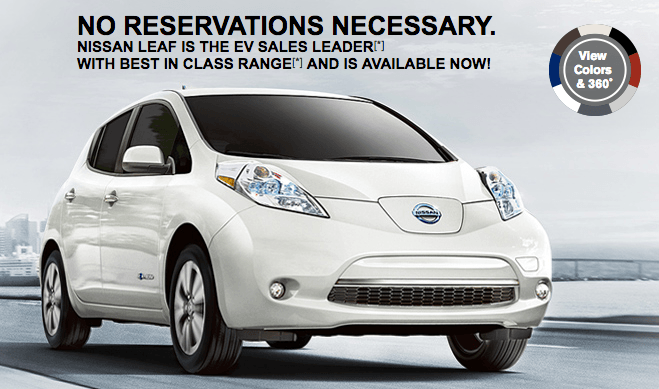

Despite the almost two-year slump in oil prices, sales of electric vehicles (EVs) are still on the increase — just not at the rate the automakers would like. Nevertheless, companies including General Motors and Nissan are still investing in electric cars, as batteries keep improving and more consumers enjoy their benefits, ranging from awesome torque to breaking free of the gas station. And overall trends are favorable to electric cars: Austria, in fact, is even mulling a ban on the sale of new gas and diesel engine cars by 2020.
As interest rises, companies are doing what they can to make sure these EVs are rolling off their inventories and into garages. Witness Nissan’s drive to push its flagship EV, the Leaf. Yes, there is still a federal tax credit, but Nissan is also offering a $4,000 cash rebate and zero percent financing. Depending on the model, the sale price can dip as low as $17,510.
Last week, Nissan raised a few eyebrows with a snarky new advertising campaign that pokes fun at Tesla Motors -- and the fact that it has 400,000 people waiting for the much-hyped Model 3, a car that likely won't ship until late next year. If you’re No. 399,999 on that waiting list, count on getting that car in 2020 -- maybe.
But Nissan’s sales have been on the decline since its first model arrived on the scene, with much hype, back in late 2010. And even though it technically leads in global EV sales, that number, just over 200,000, is only half of the Model 3 fans on Tesla’s waiting list.
“No one should have any reservations about getting an electric car today,” said the ad, which appeared in some of the largest newspapers in the U.S. last Friday. Nissan’s ad campaign then touts the automaker’s leadership in the EV market, in addition to the fact that instead of plunking down $1,000 for a car that will not appear until late 2017, new owners can get a $4,000 check from Nissan if they drive a new Leaf home. Plus, the newer Leafs have improved on range, getting up to 107 miles on a fully-charged battery.
The problem Nissan is facing, however, is that new EV models are emerging. After several years of development, GM plans to roll out its all-electric Chevy Bolt by the end of this year. And while its estimated $30,000 price tag is higher than that of the Leaf, it promises a range of approximately 200 miles on a full battery charge. Once the Model 3 is released, Tesla is offering a range of 215 miles.
Both the Bolt and the Model 3 make huge strides to overcome “range anxiety,” a huge issue for those potential buyers, who, in fact, are less price sensitive than the typical buyer of a new car. If Nissan cannot improve the Leaf’s range soon, its competitors could make that car irrelevant — and this new ad campaign will be remembered not as witty, but as a desperate ploy.
Image credit: Nissan